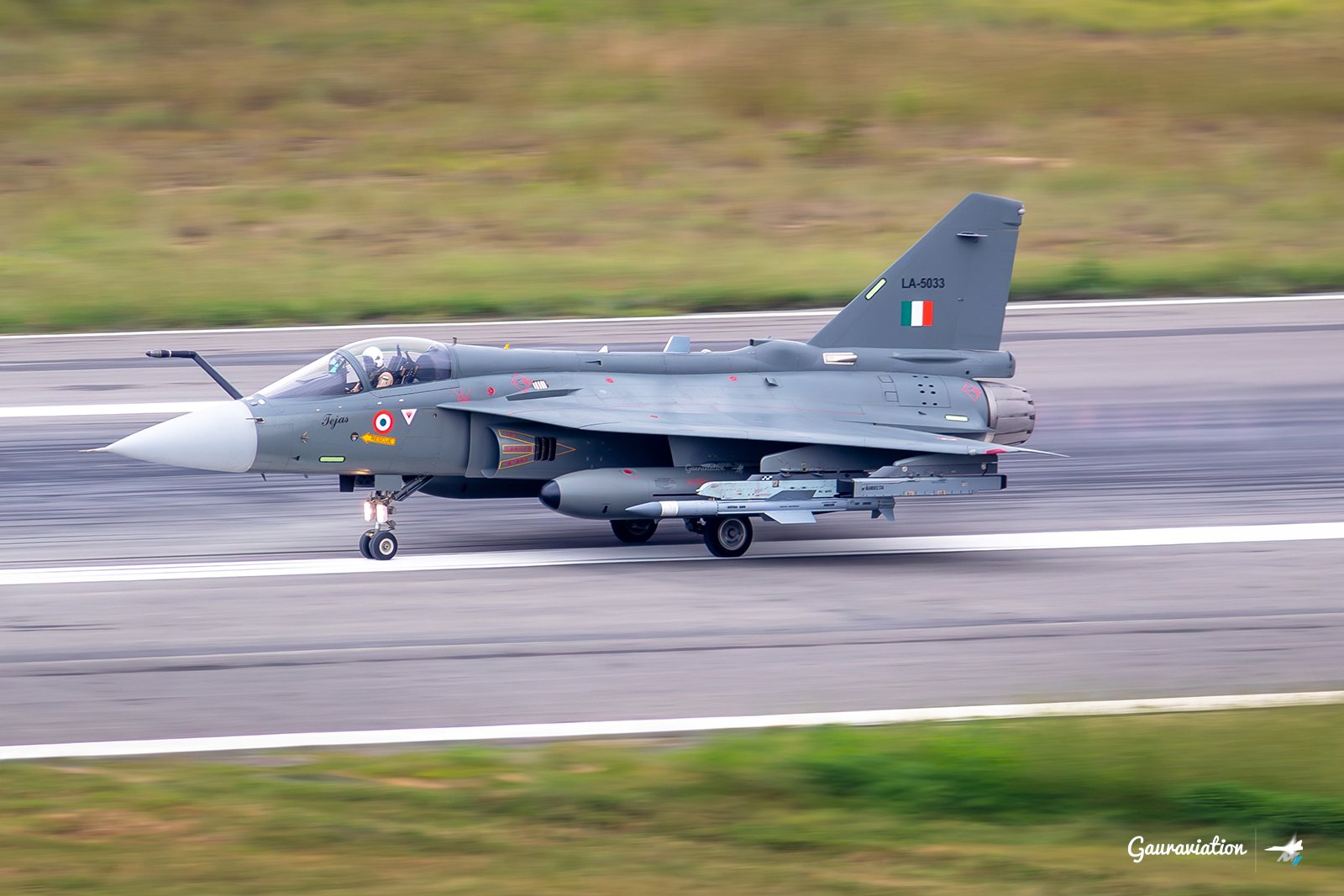SOURCE: AFI

Recent images of India’s Tejas Mk1A Light Combat Aircraft (LCA) have confirmed the integration of the latest Scorpius-SPJ (Self-Protection Jammer) ELL-8222SB, a sophisticated Electronic Countermeasures (ECM) pod developed by ELTA. This advanced airborne self-protection system, ordered by the Indian Air Force (IAF) in 2022, marks a significant leap in the ECM capabilities of the Tejas Mk1A. It is designed to detect and counter modern Air-to-Air (A/A) and Surface-to-Air (S/A) threats, which are increasingly prominent in high-intensity combat environments.
The Scorpius-SPJ is an airborne self-protection ECM system that leverages Staring Multibeam AESA (Active Electronically Scanned Array) technology, a breakthrough in electronic warfare (EW) technology. Unlike conventional AESA systems that scan sequentially, this “staring” technology allows the Scorpius-SPJ to generate hundreds of highly concentrated beams in all directions simultaneously. This capability enables the system to detect, track, and jam multiple threats at once across a wide spectrum, ensuring unparalleled electronic warfare (EW) superiority.
The Scorpius-SPJ builds on ELTA’s legacy ELL-8222 self-protection system, known for its reliability and effectiveness across various combat aircraft globally. The ELL-8222 system has decades of operational history, but the Scorpius-SPJ brings improvements that dramatically enhance range, power, and sensitivity in the new ELL-8222SB variant, which has been integrated into the Tejas Mk1A.
Designed as a compact, lightweight pod with low aerodynamic drag, the Scorpius-SPJ aligns with the sleek design of an air-to-air missile, making it suitable for the outer wing stations of fighter jets. This modular design offers substantial logistic and operational flexibility, as it can be swiftly transferred between aircraft, adapting to the demands of dynamic mission profiles. Its lightweight and aerodynamic characteristics are essential for the Tejas Mk1A, ensuring minimal impact on speed and maneuverability.
With this new ECM capability, the Tejas Mk1A gains a significant advantage in electronic warfare, critical for both defensive and offensive operations. The self-protection jammer pod allows the Tejas Mk1A to operate with reduced vulnerability in contested airspace, jamming and evading threats from sophisticated air and ground-based missile systems.
The integration of Scorpius-SPJ brings several key operational advantages:
Independent Frequencies and EW Techniques: The Scorpius-SPJ can operate on independent frequencies and apply various EW techniques for each target, making it versatile and adaptable in complex threat environments.
Simultaneous Multi-Directional Threat Management: The system can detect and engage numerous targets from different directions at once, unlike traditional jammers, which have limitations in directional capacity.
Enhanced Detection and Jamming Range: The Scorpius-SPJ’s increased receiver sensitivity and high Effective Radiated Power (ERP) extend its detection and jamming range, making it more effective against distant threats than previous-generation systems.